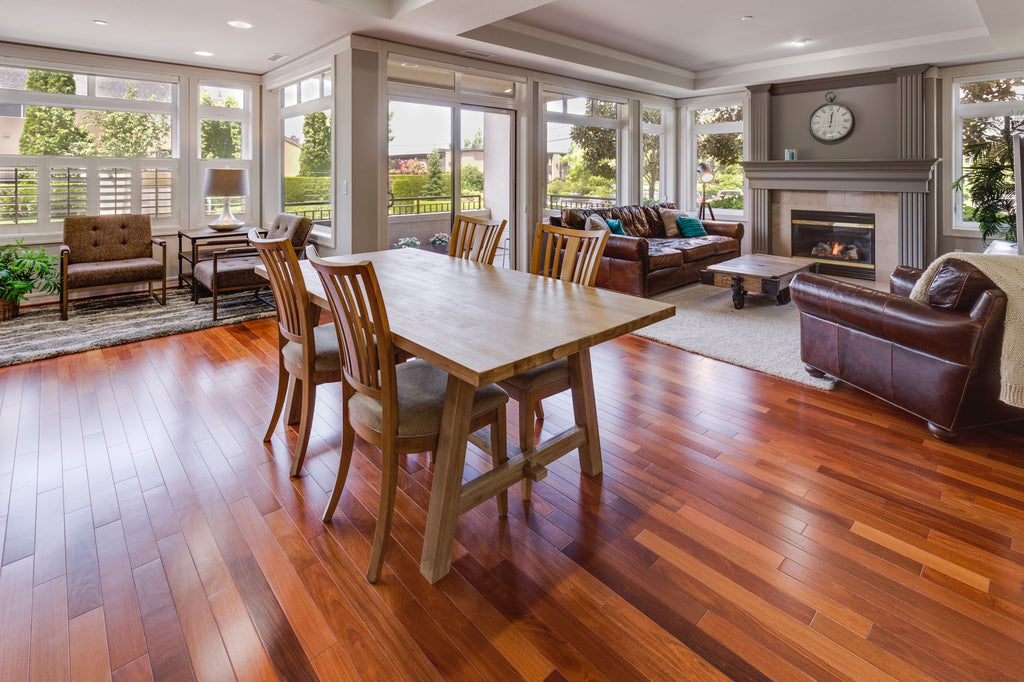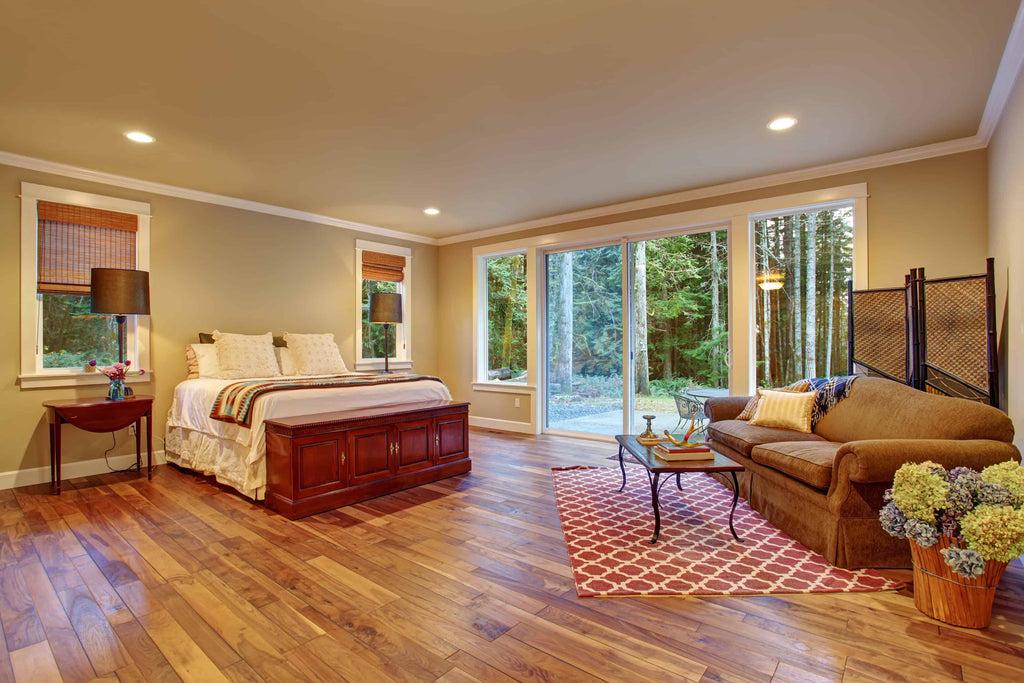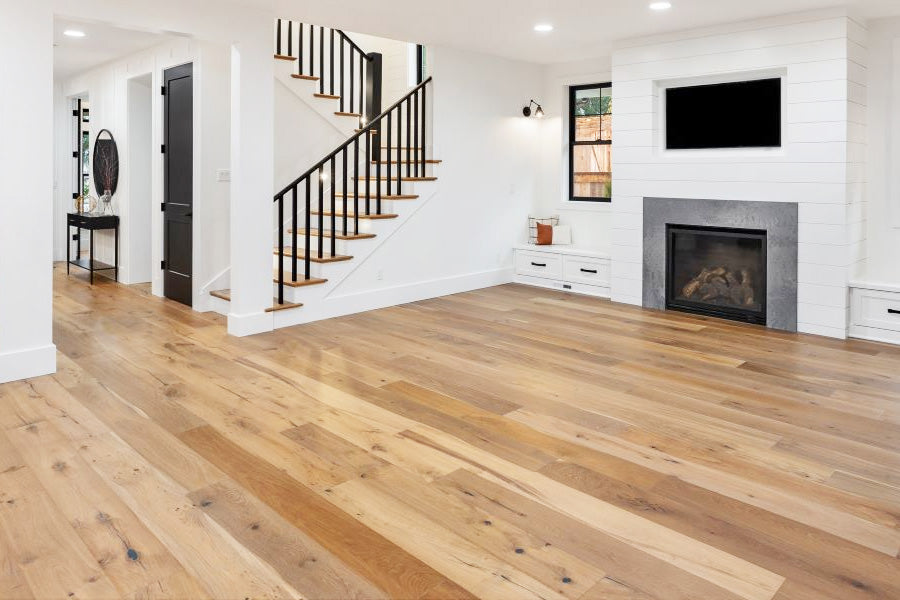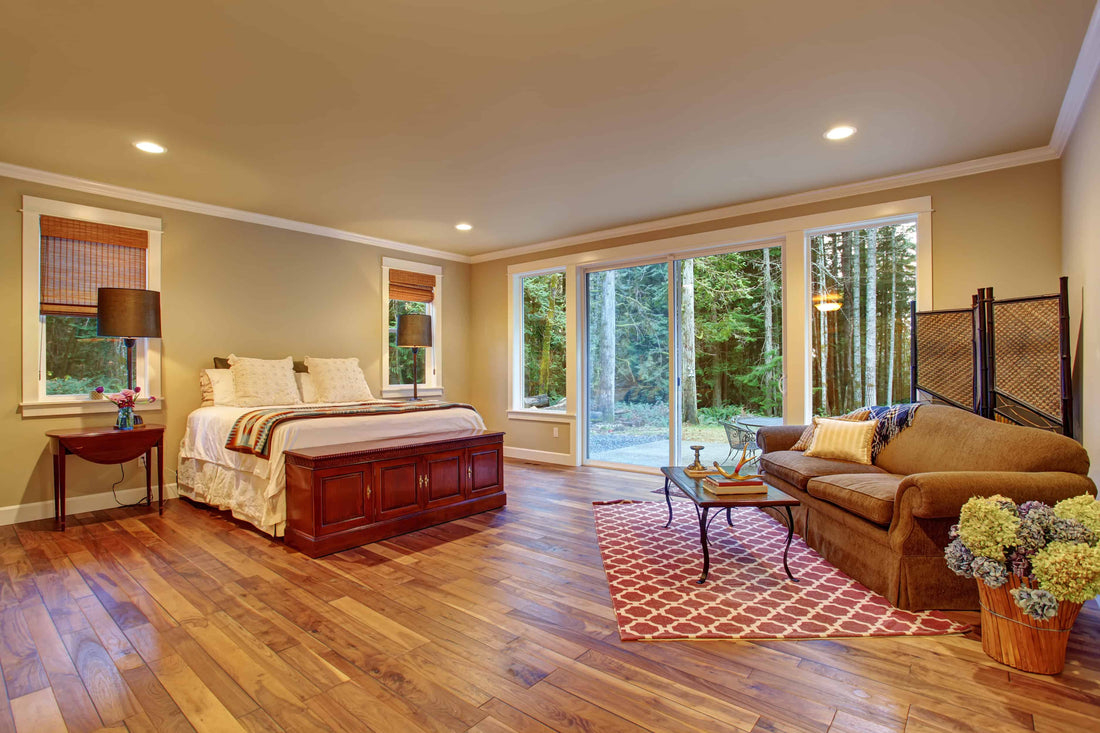When it comes to flooring, the decision between laminate and hardwood is a common dilemma for homeowners. Both options offer their own set of advantages, but which one represents the better long-term investment for your home? In this guide, we'll explore the pros and cons of laminate and hardwood flooring, helping you make an informed decision that aligns with your style, budget, and the needs of your household. After all, your floors should not only be aesthetically pleasing but also a practical and enduring investment in your home.
Understanding Laminate Flooring

Laminate flooring is a versatile and cost-effective option that replicates the look of hardwood. It's composed of layers, including a high-density fiberboard core and a realistic photographic layer that mimics wood. Laminate is known for its affordability, easy installation, and resistance to scratches and stains.
The Pros of Laminate Flooring:
Budget-Friendly: Laminate is notably less expensive than hardwood, making it a practical choice for cost-conscious homeowners.
Durability: Laminate flooring is highly resistant to wear and tear, thanks to its protective top layer. It's an excellent option for high-traffic areas and homes with children and pets.
Variety of Styles: Laminate comes in a wide range of styles, textures, and colors, allowing you to achieve the look of hardwood or other materials without the associated costs.
Easy Installation: The click-and-lock installation system of laminate makes it a suitable choice for DIY enthusiasts, saving on installation costs.
The Cons of Laminate Flooring:
Moisture Sensitivity: While some laminates have water-resistant features, they are generally not as moisture-resistant as hardwood. Prolonged exposure to moisture can lead to damage.
Exploring Hardwood Flooring:

Hardwood flooring exudes elegance and timeless beauty. It's made from solid wood boards, offering a natural and authentic look that's hard to replicate. Hardwood is known for its longevity and ability to add significant value to a home.
The Pros of Hardwood Flooring:
Timeless Aesthetic: Hardwood boasts a classic, sophisticated appearance that can enhance the overall design and value of your home.
Longevity: When properly maintained, hardwood floors can last for generations, making them a worthwhile investment.
Enhanced Home Value: Hardwood floors are often considered a premium feature in homes, potentially increasing the resale value of your property.
The Cons of Hardwood Flooring:
Higher Cost: Hardwood is generally more expensive upfront compared to laminate. This initial investment can be a deterrent for budget-conscious homeowners.
Maintenance Needs: Hardwood requires regular maintenance, including refinishing and sealing, to preserve its appearance and integrity.
Vulnerability to Scratches: While hardwood is durable, it can be susceptible to scratches, particularly in high-traffic areas.
How Does The Durability Of Laminate Compare To That Of Hardwood, Especially In High-Traffic Areas?

Durability is a key consideration when choosing flooring for high-traffic areas, and both laminate and hardwood offer distinct advantages.
Laminate Flooring:
Laminate flooring is engineered to be highly durable, making it well-suited for areas with heavy foot traffic. It consists of multiple layers, including a wear layer that protects against scratches, stains, and fading. The top layer is often made from aluminum oxide, a material known for its resistance to wear. Additionally, laminate is generally more resistant to dents and impacts than hardwood. This makes it a practical choice for households with active families, children, or pets. However, it's essential to note that while laminate is durable, it may not be as easily repairable as hardwood in the event of damage.
Hardwood Flooring:
Hardwood is renowned for its timeless beauty and long-lasting durability. While it can be susceptible to scratches and dents, the extent of wear largely depends on the wood species and the hardness of the wood. Hardwoods like oak and maple are known for their durability. In high-traffic areas, solid hardwood can be sanded and refinished multiple times over its lifespan, renewing its appearance and extending its durability. Engineered hardwood, which consists of a real wood veneer over layers of plywood, can also offer excellent durability and stability.
Considerations:
- Scratch Resistance: Laminate often has a superior scratch-resistant surface due to its wear layer, making it resilient in areas prone to pet claws, furniture movement, and heavy foot traffic.
- Moisture Resistance: While neither laminate nor hardwood is impervious to moisture, laminate's moisture-resistant properties may give it an edge in environments where spills are a common occurrence.
- Refinishing: One of the notable advantages of hardwood is its ability to be sanded and refinished, allowing you to address wear and tear over time. Laminate, being a composite material, cannot be refinished in the same manner.
In summary, both laminate and hardwood can be durable choices for high-traffic areas, but the specific demands of the space, maintenance preferences, and the ability to refinish damaged areas should factor into your decision. Ultimately, the best choice depends on your lifestyle, aesthetic preferences, and the level of maintenance you are willing to undertake.
Can Laminate Flooring Mimic The Natural Look Of Hardwood Convincingly?

Absolutely, one of the standout features of laminate flooring is its ability to convincingly mimic the natural look of hardwood. Technological advancements in the manufacturing of laminate have allowed for highly realistic designs that closely resemble various wood species. Here's how laminate achieves this convincing mimicry:
- High-Resolution Imaging:
Laminate flooring uses high-resolution photography to capture the intricate details of real hardwood. This includes the grain patterns, knots, and unique textures that give hardwood its authentic appearance.
- Realistic Surface Textures:
In addition to visual mimicry, modern laminate flooring often incorporates textured surfaces that mimic the feel of real wood. These textures add depth and realism, making it challenging to distinguish laminate from hardwood by touch alone.
- Varied Plank Widths and Lengths:
Just like hardwood, laminate planks are available in various widths and lengths. This variability contributes to a more authentic appearance, as it replicates the natural diversity found in hardwood floors.
- Embossed-in-Register (EIR) Technology:
EIR technology is a significant advancement in laminate manufacturing. This process aligns the surface texture with the underlying decorative layer, creating a synchronized texture that mirrors the wood grain. As a result, the visual and tactile aspects align, enhancing the overall realism.
- Diverse Styles and Finishes:
Laminate comes in a wide range of styles, finishes, and colors, providing homeowners with the freedom to choose the exact look they desire. Whether you prefer the warm tones of oak, the richness of walnut, or the timeless appeal of maple, there's a laminate option that closely resembles the hardwood species of your choice.
Benefits of Laminate's Mimicry:
Cost-Effective Aesthetics: Laminate offers an affordable way to achieve the aesthetic appeal of hardwood without the higher price tag associated with genuine wood.
Versatility: The ability to mimic various hardwood styles and colors makes laminate a versatile flooring option for different design preferences and home styles.
Consistency: Unlike natural wood, laminate offers a consistent appearance across planks, ensuring a uniform and cohesive look throughout the floor.
While laminate's mimicry of hardwood is impressive, it's essential to note that the distinction may become more apparent upon close inspection. Additionally, hardwood enthusiasts who value the authenticity of real wood may still prefer the genuine article. However, for those seeking a budget-friendly, durable, and aesthetically pleasing alternative, laminate flooring provides a compelling solution.
Final Thoughts on Laminate Flooring vs. Hardwood
The choice between laminate and hardwood ultimately depends on your budget, design preferences, and long-term goals. Laminate is a cost-effective and low-maintenance option, ideal for busy households. Hardwood, on the other hand, provides a timeless aesthetic and enduring value, making it a significant investment in your home.
Consider your lifestyle, the specific needs of your space, and your financial situation when making this decision. Both laminate and hardwood have their own unique appeal, and the "better" investment is the one that aligns with your priorities and enhances your home for years to come.
Flooring blog articles you may want to read:
Hardwood Flooring Finishes: Which is Best for You?
Vinyl Flooring for Rental Properties: Durable and Budget-Friendly Solutions
